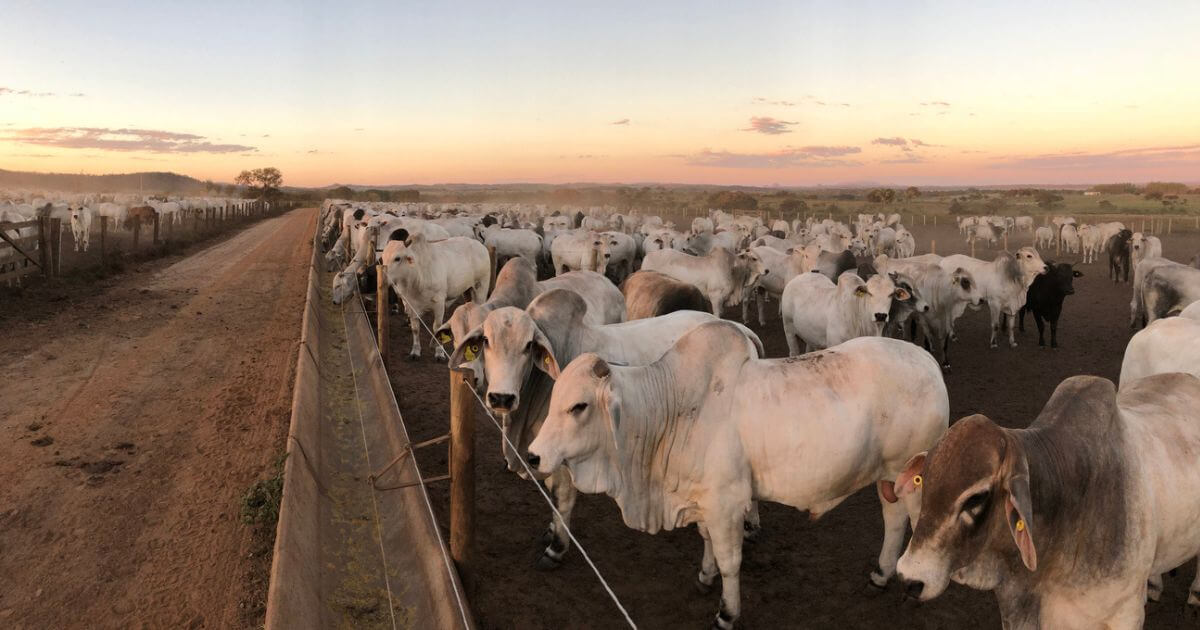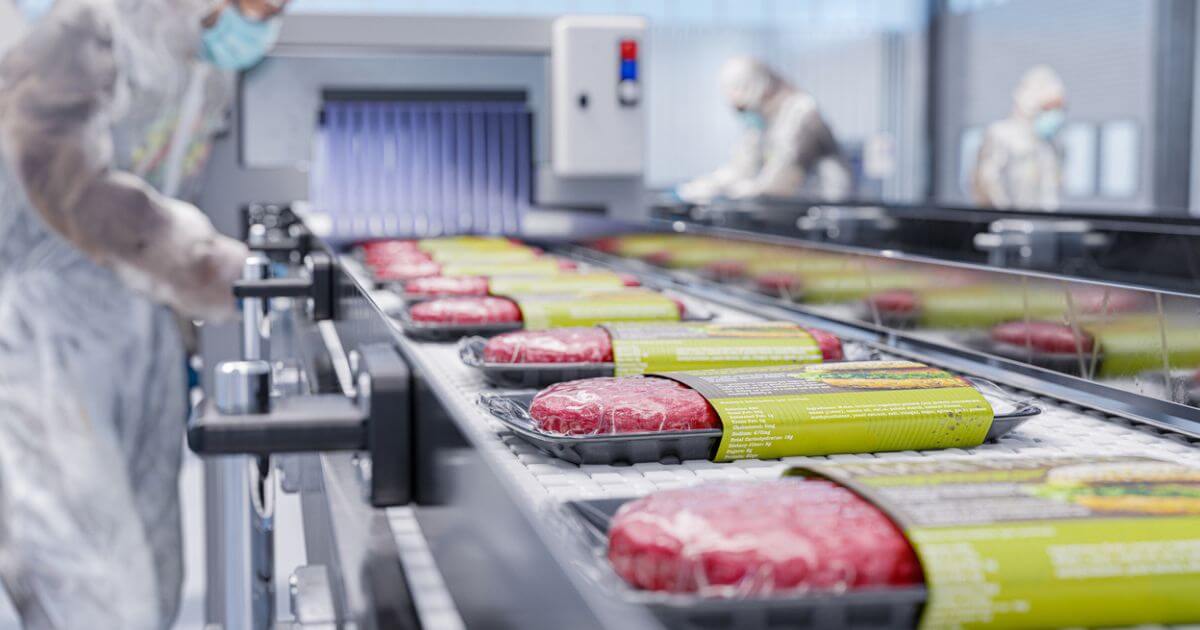
Tamara Davison
Tamara Davison is a journalist who specializes in sustainability and the environment. Reporting from around the world, she's seen firsthand the direct impact waste is having on coastal communities and our oceans. As a diver trained in ecological monitoring, the changes Tamara has seen in marine habitats inspired her to action. She's previously written for The Guardian, The Independent and the Evening Standard. She's also produced environmental documentaries for EuroNews.
The food industry places a lot of strain on the environment through agriculture, manufacturing, packaging, and waste.
As our world’s population grows, so does the demand for food products. Unfortunately, many of these practices are unsustainable. To meet rising demand, the food industry tends to focus on profits and scale rather than the impact it has on the environment.
As a result, food is now responsible for 26% of global carbon emissions (Our World in Data, 2019). So, how exactly does the food industry impact our planet? Let’s dive in through this comprehensive guide.
At CleanHub, we’re committed to helping brands reduce their environmental impact. Want to get involved? Get in touch with our team of in-house experts today to learn how you can reduce your business’s plastic footprint.
What’s on this page?
01 | The environmental impact of the food industry — at a glance
02 | How does the food industry impact the environment?
03 | Key ethical concerns with the food industry
04 | Which food items produce the most emissions?
05 | Which food items produce the most plastic waste?
06 | How is the food industry becoming more sustainable?
07 | What can consumers do to drive change in the food industry?
08 | Top tips on how food brands can become more sustainable
09 | Summary
The environmental impact of the food industry — at a glance
From sourcing ingredients to packaging the products, each stage of the food industry impacts the environment.
For example, mass agriculture practices often deplete nutrients in the soil while relying on harmful pesticides to speed up the process — both negatively impacting plants and insects.
At the other end of the spectrum, food waste sent to landfills generates 58% of all methane gas emitted from landfill sites, more than any other material.
Single-use plastic packaging waste is another major challenge facing the food industry, and in some cases, it’s entirely unnecessary. In 2019, the global food production industry used an estimated 12.5 million tons of plastic, primarily for packaging food products.
Much of this will pollute our environment and oceans for decades, if not centuries, to come.
Luckily, a new generation of environmentally driven agricultural workers, food brands, and conscious consumers are starting to turn the tide.
How does the food industry impact the environment?
Increasing demand for food production simply outweighs our planet’s ability to replenish resources. Here’s what you need to know.
Increases global emissions
The food industry generates a huge amount of carbon emissions, from farming and transport to the energy powering our grocery stores.
Agriculture contributed to 10% of total global emissions in the United States in 2021. According to the EPA, this is primarily down to livestock (such as cows, which are notorious for methane emissions) and rice production.
Many producers export their produce around the world, such as the blueberries you eat from Peru and the oranges from Spain. According to the EU, transporting fruit and vegetables releases twice as many greenhouse gasses as production.
Even the sales process takes a toll. Storing foods in supermarkets requires robust refrigeration systems to keep ingredients fresh. These freezers rely on manmade gasses known as hydrofluorocarbons (HFCs) that keep the fridge cool, ensuring the longevity of food products. According to CBC, these machines often leak, meaning a single supermarket emits the equivalent carbon emissions to 300 cars a year.
Food waste also contributes to emissions. Many assume food products biodegrade so they don’t impact the environment once discarded — unfortunately, they’re wrong.
In 2020, the US Environmental Protection Agency (EPA) said that food waste rotting in landfills led to the release of around 55 million metric tons of CO2 equivalents. That’s the same as Finland's total emissions as a country in 2019. A further 61% of methane from US food waste goes directly into our atmosphere, further fuelling climate change.
Generates a lot of plastic waste
Studies estimate that food packaging amounts to over a third of the world’s overall packaging market, resulting in a lot of plastic waste.
Although plastic may protect food ingredients from bacteria and enhance sales presentation, it’s often designed for single use. Some plastics — such as polystyrene plates or cling film sheets — are impossible to recycle, meaning most food packaging ends up as waste instead of being fed back into the economy.
Not only does plastic waste make up 80% of all marine pollution, but plastic packaging could also pose a risk to public health. Studies have found that microplastics can seep from bottles into water, which is then consumed by humans. In early 2024, PBS reported that scientists found a quarter of a million microplastics in a liter of bottled water.
The worst thing about this is that a lot of food packaging is unnecessary. Snack items like chips and biscuits often come in multipacks that include layers of outer and inner packaging purely for aesthetic purposes and to stand out on shelves. You’ve probably also spotted oranges and bananas wrapped in plastic despite having their natural barrier. This has to stop.
Contributes to deforestation
Around 80% of all deforestation makes way for agricultural practices and palm oil plantations. According to the Food and Agriculture Organisation (FAO), we’ve lost 420 million hectares of forest since 1990, with land owners and businesses converting it to other uses. By our calculations, that’s around six times the size of Texas lost in the last three decades.
It’s no secret that deforestation contributes to mass biodiversity and animal loss worldwide. It can also alter weather patterns, damage the health of the soil, and negatively impact local communities.
A 2019 study concluded that forests cleared for agriculture “have a higher and longer lasting impact on landslide susceptibility,” proving that increased farming is connected to higher risks of natural disasters.
Wastes huge amounts of water
Agriculture uses around 70% of the world’s freshwater resources to facilitate irrigation (watering), sustain livestock, and process goods. The Food and Agriculture Organization expects this to rise as our population grows, adding more strain to dwindling freshwater sources.
The food industry’s reliance on water is unsustainable. As a result of climate change, warmer regions, and developing nations will be more impacted by water scarcity and agricultural challenges in the coming years. However, the fallout of future water shortages in the food industry may have a global impact on food prices, availability, and even regional tensions.
Much of this water also gets polluted during farming processes and goes to waste. Some conventional farming practices use chemicals and pesticides to speed up growing methods, and the runoff pollutes the surrounding soil.
Studies have found pesticides in drinking water supplies and the human body, with the medical communities linking these chemicals to health issues like cancer.
Reduces biodiversity
The UN Environment Programme (UNEP) has revealed that the global food industry is the biggest driver of biodiversity loss worldwide. Of the 28,000 animal species deemed at risk of extinction, 84% are threatened by agriculture.
It’s not just animal habitats that are under threat. Pesticides and fertilizers profoundly affect insect colonies, such as bees, which we need to sustain our food supplies.
Our world’s pollinators are critical to the survival of countless plants that rely on their pollination. Yet, almost half of the bee colonies died off in the US during 2023 because of viruses, bad weather, and pesticides. Any biodiversity changes may also impact larger animals, as this can affect the food chain.
Consumption of resources to feed livestock
Farm animals require space, water, food, and shelter, meaning the animal farming industry uses many resources to sustain itself. According to Our World in Data, the land used for grazing animals and the land used to grow crops for animal feed account for 80% of agricultural land use.
We’re clearing land and losing biodiversity to grow food for farm animals, adding to an already unsustainable cycle.
The amount of land used to sustain animal farming outweighs the amount of protein this industry provides, and it is considered inefficient compared to plant-based agriculture.
Soil depletion
Whether growing vegetables or caring for grazing cows, lots of agricultural practices take a toll on the soil. Most of these practices use up excessive nutrients in the soil, while excessive pesticide use further impacts the soil’s makeup, impacting future farming efforts.
Around 59% of the world’s species — from microbes to animals — live in the soil, making good soil essential to maintaining these delicate ecosystems.
Overgrazing on land often leaves fields lacking in resources, making it difficult for plants to grow and the land to regenerate naturally. Scientists now consider more than half of the world’s soil degraded, meaning it’s becoming harder to sustain food sources for our growing world population.

Key ethical concerns with the food industry
The environment is not the only issue. The modern-day food industry also faces numerous ethical concerns — we've listed the key ones below.
Animal welfare
Like other parts of the food industry, modern-day animal farming is geared toward producing low-cost food products en masse. As a result, very few practices are considered ethical, with many of the animals being kept in cramped cages, forced to reproduce, and slaughtered in cruel ways.
For example, around 60% of the world’s eggs come from chickens in battery cages without movement or access to outdoor space.
These ethical concerns have led to a boom in people switching to plant-based diets. The number of people who identified as vegan in the UK grew by 1.1 million between 2023 and 2024. And, by 2025, Sainsbury’s believes half of the UK population will be ‘flexitarian,’ only occasionally eating meat and fish.
Supermarkets are also starting to take note, with shelves of vegetarian and vegan food alternatives expanding.
Working conditions
A 2023 report revealed that the world’s 60 largest food and beverage businesses had an average score of just 16/100 regarding forced labor risks in the supply chain. Forced labor tends to happen during the agriculture phase, with people paid very little while working long hours to farm products.
The food manufacturing industry often relies on large machinery to speed up processes and deliver cheap food on time, however, this comes with health risks if not managed properly.
A 2021 report claimed that food manufacturing workers have a 60% higher chance of suffering occupational injury and illness, suggesting that some companies are putting profit over their people.
Destroying Indigenous land
Indigenous communities have dutifully protected and nurtured their natural surroundings over the centuries in many parts of the world, and over 80% of the world’s biodiversity exists on indigenous land. However, limited legal protections mean land grabs are common.
Unfortunately, many ancient traditions have been threatened by encroaching agricultural practices in the US and further afield. One example is JBS, a Brazilian meatpacking business that cleared over 100,000 hectares of forest in Brazil between 2019 and 2021 to make way for livestock.
Which food items produce the most emissions?
According to the United Nations, red meat products tend to be associated with the most carbon emissions because of the amount of methane produced by animals.
A 2021 study revealed that meat products account for around 60% of all emissions linked to the food manufacturing industry. Researchers have also concluded that a vegan diet contributes 75% less carbon emissions than meat, suggesting there’s even more incentive to cut out meat products from your diet.
However, it’s worth remembering that although plant-based food produces fewer emissions than meat, global exports of fruit and vegetables quickly ramp up emissions linked to this market.
Which food items produce the most plastic waste?
The food industry plays a massive role in global plastic waste, with takeaway food and drink containers being the most significant source of ocean plastic pollution.
Identifying which individual food products contribute the most waste is difficult, but processed food and drink are among the biggest culprits. Processed food, such as snacks, microwavable meals, and ready-prepped lunches, usually require more wrapping than fresh counterparts to keep the products protected from the elements.
Recent studies have also highlighted that fresh foods packed in plastic are no better.
Researchers found plastic packaging on fruits like strawberries resulted in more bulk buying and sped up food spoilage as it trapped moisture in containers. This shows that more alternative packaging materials need to be embraced in certain areas of the industry.

How is the food industry becoming more sustainable?
According to Susan Gardner, Director of UNEP’s Ecosystems Division, "reforming the way we produce and consume food is an urgent priority — we need to change global dietary patterns, protect and set aside land for nature, and farm in a more nature-friendly and biodiversity-supporting way.”
A growing awareness about the food industry’s impact has prompted many to take action. Consumers are reassessing what they eat, while some brands are swapping unsustainable practices for planet-friendly alternatives. While organic farming has been around for some time, we’re now seeing the emergence of new tools and strategies designed to make food processes long-lasting and good for the planet.
Everything from sustainable sourcing to plastic-free packaging is rising in the food industry.
Several major brands are adopting regenerative agriculture practices (improving the health of farmland soil) to support biodiversity. Nestlé, for example, plans to source 50% of its ingredients from regenerative agriculture farmers by 2030. Danone similarly pledged to use regenerative agriculture to support farmers and the future of our farmland.
Regenerative agriculture isn’t a silver bullet, nor does it mean these brands are necessarily sustainable leaders. However, seeing more discussion about the need for change in agriculture is encouraging.
The other big focus is waste and packaging; we’re also starting to see some change here. For example, in 2023, Quaker Oats ditched plastic for cardboard packaging, reducing the production of 200 million tons of virgin plastic.
Of course, there’s still a long way to go, but brands that fail to embrace sustainability across all their verticals risk losing customers and may face fines for failing to support the environment.
What can consumers do to drive change in the food industry?
According to the World Economic Forum, 65% of people want to lead a healthy and sustainable life and are willing to spend money to do so. Most consumers care about the planet and the food they eat, so they’re well-positioned to take action.
It starts by recognizing the power of the purse and supporting food brands that are kind to the planet. Check product labels for things that may not be sustainable — such as palm oil. To avoid falling victim to greenwashing, look out for food symbols, such as the Fairtrade logo, and make informed decisions by researching the sustainable commitments made by your favorite food brands.
What’s more, don’t be afraid to engage with brands and actively make a difference. Share your feedback, comment on social media posts, and encourage more discussion about the sustainable food industry.
Finally, the most impactful thing you can do to bring about change is to reduce your meat intake. You don’t have to quit cold turkey either, as every little lifestyle change counts. In fact, one study found that if Americans cut just a quarter of their meat intake, it would reduce the country’s annual emissions by 1%.
This doesn’t sound like a lot on paper, but when you think about the amount of farmland and resources this could save, you start to see the knock-on benefits this could have.
Top tips on how food brands can become more sustainable
Here are some simple ways to support the environment as a food brand.
- Explore packaging alternatives — Swapping single-use plastic for alternatives like recycled cardboard can unlock a new customer base and help you stand out as a sustainable leader. You can also join forces with organizations like CleanHub that can help food and beverage businesses turn their plastic waste into sustainable action.
- Optimize supply chain practices — Conduct regular audits to understand where your emissions come from and paint a clearer picture of how to cut costs and save energy. For instance, you could reconfigure the packaging size to minimize shipping space while reducing waste.
- Work with local farmers — Instead of sourcing your ingredients from around the world, working with local producers can dramatically reduce emissions linked to your food products. This usually supports local small-time growers, prioritizing more sustainable practices than mass-production farms.
- Commit to reducing food waste — Explore ways to keep the byproducts of food manufacturing in circulation and embrace composting. Skip the ‘sell by’ dates and ensure that good-to-eat products aren’t thrown away unnecessarily. Partner with organizations like Waste No Food, which can help you donate excess food to needy people.
Summary
The global food industry isn’t going to become sustainable overnight. Yet, it’s clear that unless we change existing practices, the world will face massive food challenges in the future.
Introducing small changes to how we eat, shop, and view food can make a big difference in the long run. This will require commitments from consumers, brands, and retailers, who can all work together to support a more sustainable food industry.
At CleanHub, we work with many food and drink brands to help create a more sustainable future. We do this by assisting brands in reducing their plastic footprint while supporting coastal communities worldwide and stopping more ocean-bound plastic from polluting our rivers and oceans.
Want to join the sustainable food industry movement? Speak to our resident experts to get a packaging assessment.

.webp)
.webp?width=380&name=Cosmetics%20(1).webp)






.webp?width=380&name=Plastic-free-soap%20(1).webp)
%20(1).webp?width=380&name=Clothes%20(1)%20(1).webp)
%20(1).webp?width=380&name=Summer%20(1)%20(1).webp)
